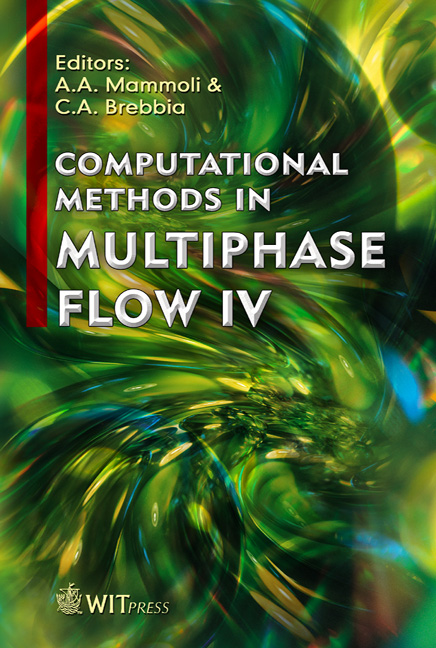Lagrangian Monte Carlo Simulation Of Spray-flow Interaction
Price
Free (open access)
Transaction
Volume
56
Pages
10
Published
2007
Size
562 kb
Paper DOI
10.2495/MPF070261
Copyright
WIT Press
Author(s)
T. Belmrabet, R. Russo, M. Mulas & S. Hanchi
Abstract
The aim of this work is to determine the interaction between a droplet’s stationary spray and a fluid flow, accounting for droplet vaporization, breakup and turbulences effects. In order to achieve this, a Lagrangian Monte Carlo code (McSpray) has been developed, besides a volume-finite Navier–Stokes solver (Karalis). The two codes work sequentially on the same computational grid, each influencing the other, so that a complete two-way coupling might be modelled. To validate the McSpray code in the case of two-way coupling, two cases have been performed: the first is a surface injection parallel to the inflow continuum velocity; the second is a conic point injection having an injection angle equal to 15 degrees. To verify these results, they are compared with the ones provided by Fluent commercial code. Keywords: finite volume, spray, Monte Carlo. 1 Introduction The subject of multiphase flow modelling processes is a quite vast research field of utmost practical interest. When two or more phases move relatively to each other, they may exhibit a large number of possible flow regimes. There are several classifying ways of these multiphase flows. In dispersed flows all the phases except one exist as dispersed (discontinuous) particles flowing through the continuous fluid. Using the Eulerian–Lagrangian approach, trajectories of dispersed phase particles are simulated by solving an equation of motion for each particle. Motion of the continuous phase is modelled using a conventional Eulerian
Keywords
finite volume, spray, Monte Carlo.





